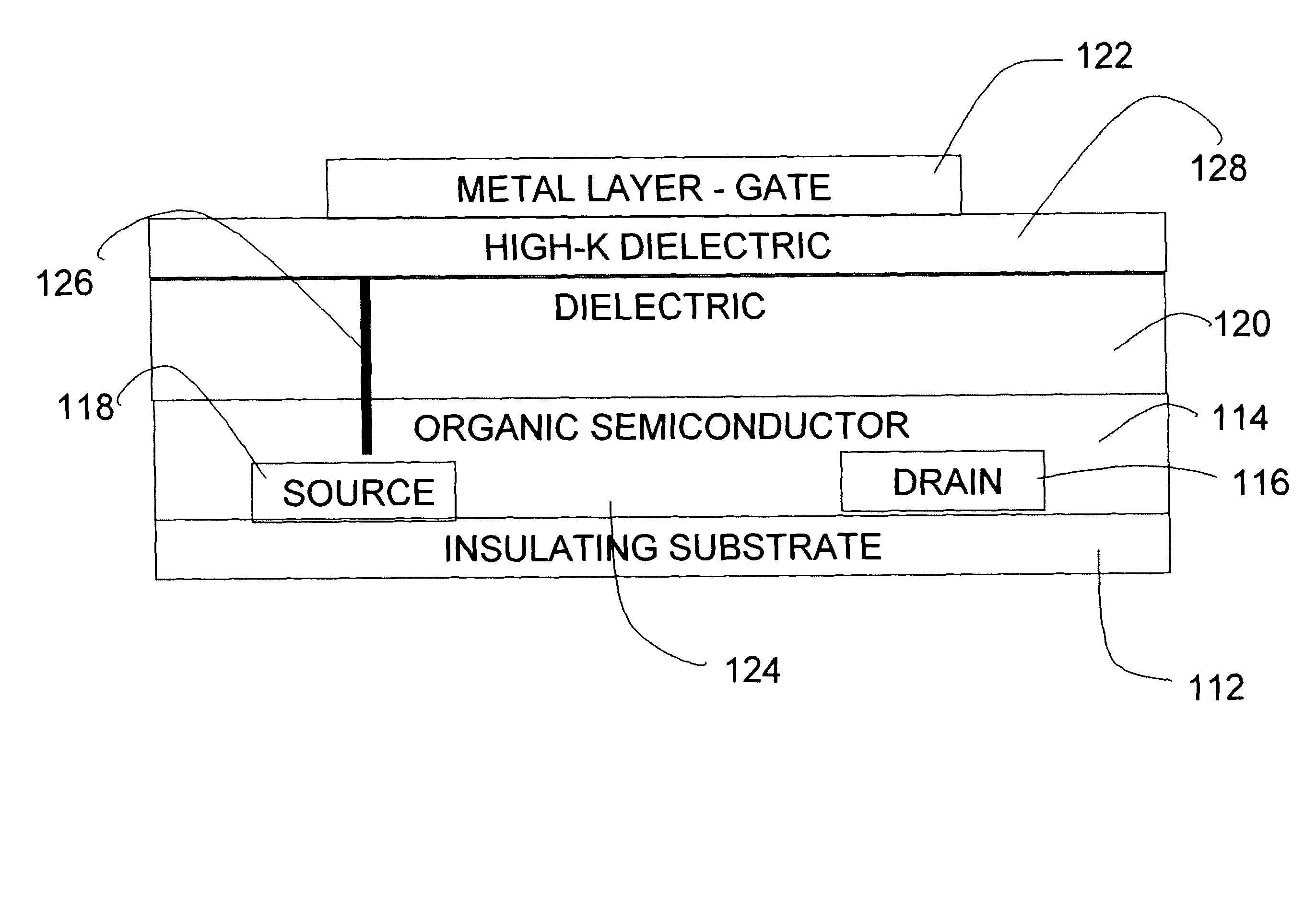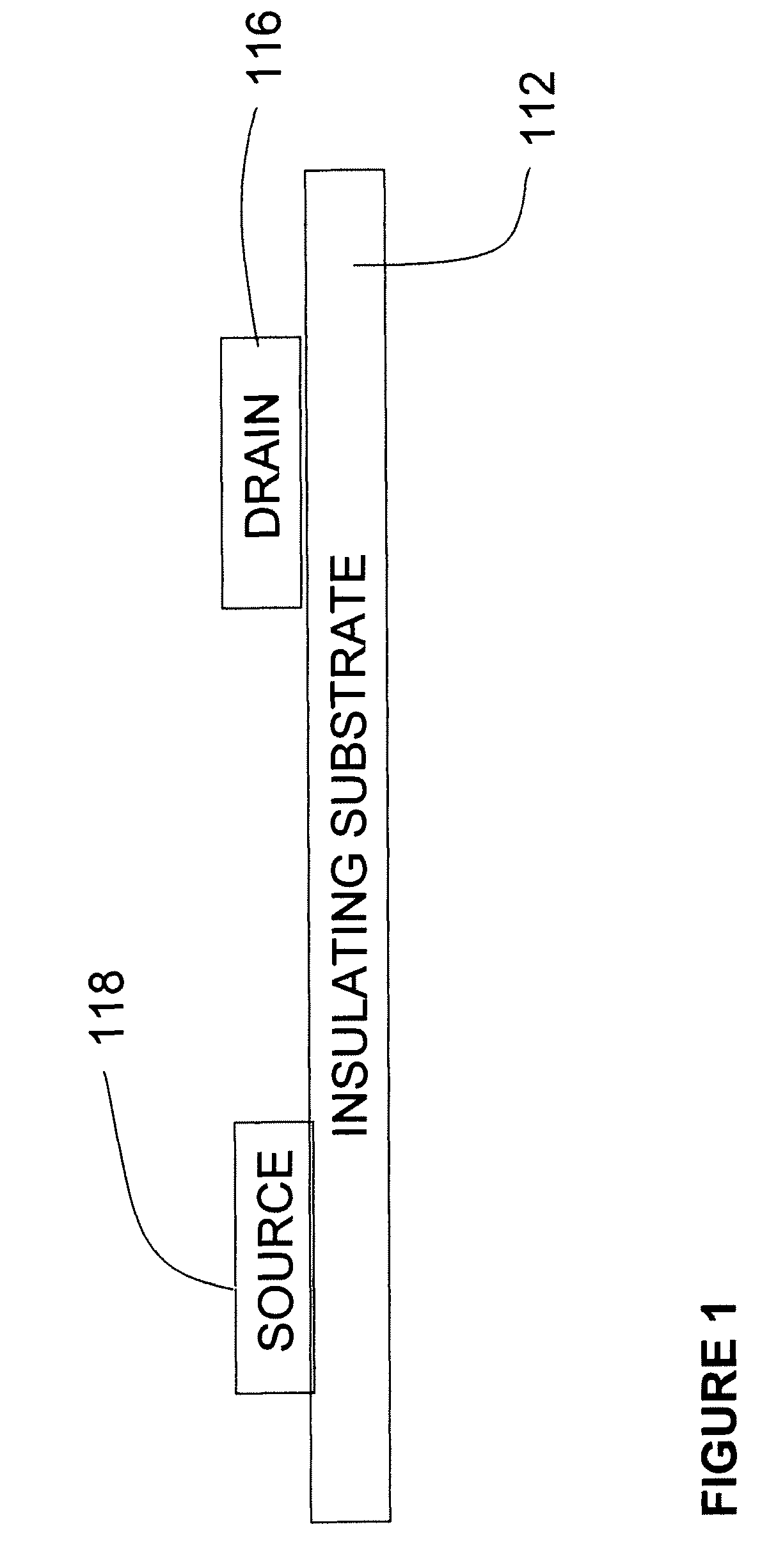Method of increasing yield in OFETs by using a high-K dielectric layer in a dual dielectric layer
a dielectric layer and dielectric layer technology, applied in the field of organic fets, can solve the problems of increasing the probability of pinholes, increasing the probability of shorting between the first conductor source/drain layer, and reducing the performance of the transistor
- Summary
- Abstract
- Description
- Claims
- Application Information
AI Technical Summary
Benefits of technology
Problems solved by technology
Method used
Image
Examples
first embodiment
[0013]In the invention, a top gate OFET having a dual dielectric layer includes a patterned first conductive layer on an insulating substrate forming source and drain contacts, a semiconductor layer in a channel region between the source and drain contacts, a first dielectric layer over the semiconductor layer in at least the channel region as well as any unconnected first level metal areas, a second dielectric layer over the first dielectric layer in at least the channel region as well as any unconnected first level metal areas, and a patterned second conductive layer on the second dielectric layer over the channel region, wherein the second dielectric layer has a dielectric constant higher than that of the first dielectric layer.
second embodiment
[0014]In the invention, a bottom-gate / bottom-contact OFET structure having a dual dielectric layer includes a patterned first conductive layer on an insulating substrate, a first dielectric layer over the patterned first conductive layer, a second dielectric layer over the first dielectric layer, a patterned second conductive layer on the second dielectric layer forming source and drain contacts, and an organic semiconductor layer in a channel region between the source and drain contacts, wherein the second dielectric layer has a dielectric constant higher than that of the first dielectric layer.
third embodiment
[0015]In the invention, a bottom-gate / bottom-contact OFET structure having a dual dielectric layer includes a patterned first conductive layer on an insulating substrate, a first dielectric layer over the patterned first conductive layer, a second dielectric layer over the first dielectric layer, an organic semiconductor layer over the second dielectric layer, and a patterned second conductive layer on organic semiconductor layer forming source and drain contacts, wherein the second dielectric layer has a dielectric constant higher than that of the first dielectric layer.
[0016]In the embodiments of the present invention, the insulating substrate includes PET, PEN, glass, or Kapton. The first conductive layer includes conductive organic materials such as PEDOT and carbon black, or nano-particle solutions or pre-cursors of inorganic materials such as gold, silver, titanium, aluminum, or silicon. The semiconductor layer includes an organic semiconductor such as polythiophene or solutio...
PUM
| Property | Measurement | Unit |
|---|---|---|
| dielectric constant | aaaaa | aaaaa |
| conductive | aaaaa | aaaaa |
| insulating | aaaaa | aaaaa |
Abstract
Description
Claims
Application Information
 Login to View More
Login to View More - R&D
- Intellectual Property
- Life Sciences
- Materials
- Tech Scout
- Unparalleled Data Quality
- Higher Quality Content
- 60% Fewer Hallucinations
Browse by: Latest US Patents, China's latest patents, Technical Efficacy Thesaurus, Application Domain, Technology Topic, Popular Technical Reports.
© 2025 PatSnap. All rights reserved.Legal|Privacy policy|Modern Slavery Act Transparency Statement|Sitemap|About US| Contact US: help@patsnap.com



